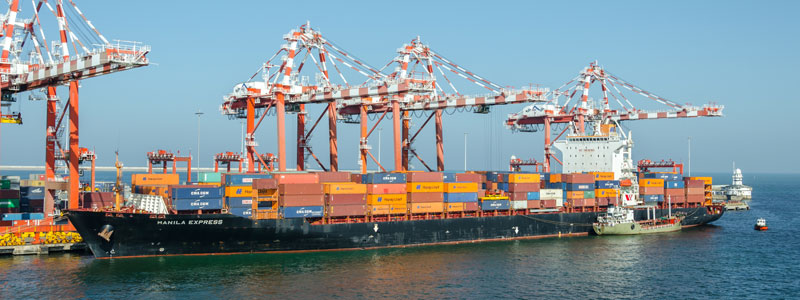What is Meteorology?
Meteorology is the science of weather. It is essentially an inter-disciplinary science because the atmosphere, land and ocean constitute an integrated system. The three basic aspects of meteorology are observation, understanding and prediction of weather. There are many kinds of routine meteorological observations. Some of them are made with simple instruments like the thermometer for measuring temperature or the anemometer for recording wind speed. The observing techniques have become increasingly complex in recent years and satellites have now made it possible to monitor the weather globally. Countries around the world exchange the weather observations through fast telecommunications channels. These are plotted on weather charts and analysed by professional meteorologists at forecasting centres. Weather forecasts are then made with the help of modern computers and supercomputers. Weather information and forecasts are of vital importance to many activities like agriculture, aviation, shipping, fisheries, tourism, defence, industrial projects, water management and disaster mitigation. Recent advances in satellite and computer technology have led to significant progress in meteorology. Our knowledge of the weather is, however, still incomplete.
Synoptic Meteorology
Weather observations, taken on the ground or on ships, and in the upper atmosphere with the help of balloon soundings, represent the state of the atmosphere at a given time. When the data are plotted on a weather map, we get a synoptic view of the world’s weather. Hence day-to-day analysis and forecasting of weather has come to be known as synoptic meteorology. It is the study of the movement of low pressure areas, air masses, fronts, and other weather systems like depressions and tropical cyclones.
Climatology
Climatology is a study of the climate of a place or region on the basis of weather records accumulated over long periods of time. The average values of meteorological parameters derived from a data base that extends over several decades are called climatological normals. Different regions of the world have different characteristic climates. However, it is now recognized that climate is not static and issues such as climate change and global warming are receiving increasing attention.
Dynamic Meteorology
This particular branch of meteorology attempts to describe the atmospheric processes through mathematical equations which together are called a numerical model. After defining the initial state of the atmosphere and ocean, the equations are solved to derive a final state, thus enabling a weather prediction to be made. Dynamic meteorology deals with a wide range of hydrodynamical equations from a global scale to small turbulent eddies. The process of solving the equations is very complicated and requires powerful computers to accomplish.
Physical Meteorology
In physical meteorology we study the physical processes of the atmosphere, such as solar radiation, its absorption and scattering in the earth-atmosphere system, the radiation back to space and the transformation of solar energy into kinetic energy of air. Cloud physics and the study of rain processes are a part of physical meteorology.
Agro Meteorology
In simple terms, agricultural meteorology is the application of meteorological information and data for the enhancement of crop yields and reduction of crop losses because of adverse weather. This has linkages with forestry, horticulture and animal husbandry. The agrometeorologist requires not only a sound knowledge of meteorology, but also of agronomy, plant physiology and plant and animal pathology, in addition to common agricultural practices. This branch of meteorology is of particular relevance to India because of the high dependence of our agriculture on monsoon rainfall which has its own vagaries.
A branch of meteorology that examines the effects and impacts of weather and climate on crops, rangeland, livestock, and various agricultural operations. The branch of agricultural meteorology dealing with atmospheric-biospheric processes occurring at small spatial scales and over relatively short time periods is known as micrometeorology, sometimes called crop micrometeorology for managed vegetative ecosystems and animal biometeorology for livestock operations. The branch that studies the processes and impacts of climatic factors over larger time and spatial scales is often referred to as agricultural climatology. See also Climatology; Micrometeorology.
Agricultural meteorology, or agrometeorology, addresses topics that often require an understanding of biological, physical, and social sciences. It studies processes that occur from the soil depths where the deepest plant roots grow to the atmospheric levels where seeds, spores, pollen, and insects may be found. Agricultural meteorologists characteristically interact with scientists from many disciplines.
Agricultural meteorologists collect and interpret weather and climate data needed to understand the interactions between vegetation and animals and their atmospheric environments. The climatic information developed by agricultural meteorologists is valuable in making proper decisions for managing resources consumed by agriculture, for optimizing agricultural production, and for adopting farming practices to minimize any adverse effects of agriculture on the environment. Such information is vital to ensure the economic and environmental sustainability of agriculture now and in the future. See also Weather observations.
Agricultural meteorologists also quantify, evaluate, and provide information on the impact and consequences of climate variability and change on agriculture. Increasingly, agricultural meteorologists assist policy makers in developing strategies to deal with climatic events such as floods, hail, or droughts and climatic changes such as global warming and climate variability.
Agricultural meteorologists are involved in many aspects of agriculture, ranging from the production of agronomic and horticultural crops, trees, and livestock to the final delivery of agricultural products to market. They study the energy and mass exchange processes of heat, carbon dioxide, water vapor, and trace gases such as methane, nitrous oxide, and ammonia, within the biosphere on spatial scales ranging from a leaf to a watershed and even to a continent. They study, for example, the photosynthesis, productivity, and water use of individual leaves, whole plants, and fields. They also examine climatic processes at time scales ranging from less than a second to more than a decade.
Applied Meteorology
Like agriculture, there are many human activities which are affected by weather and for which meteorologists can provide valuable inputs. Applied meteorologists use weather information and adopt the findings of theoretical research to suit a specific application; for example, design of aircraft, control of air pollution, architectural design, urban planning, and exploitation of solar and wind energy, air-conditioning, development of tourism, etc.













